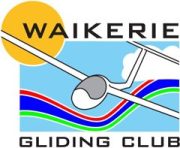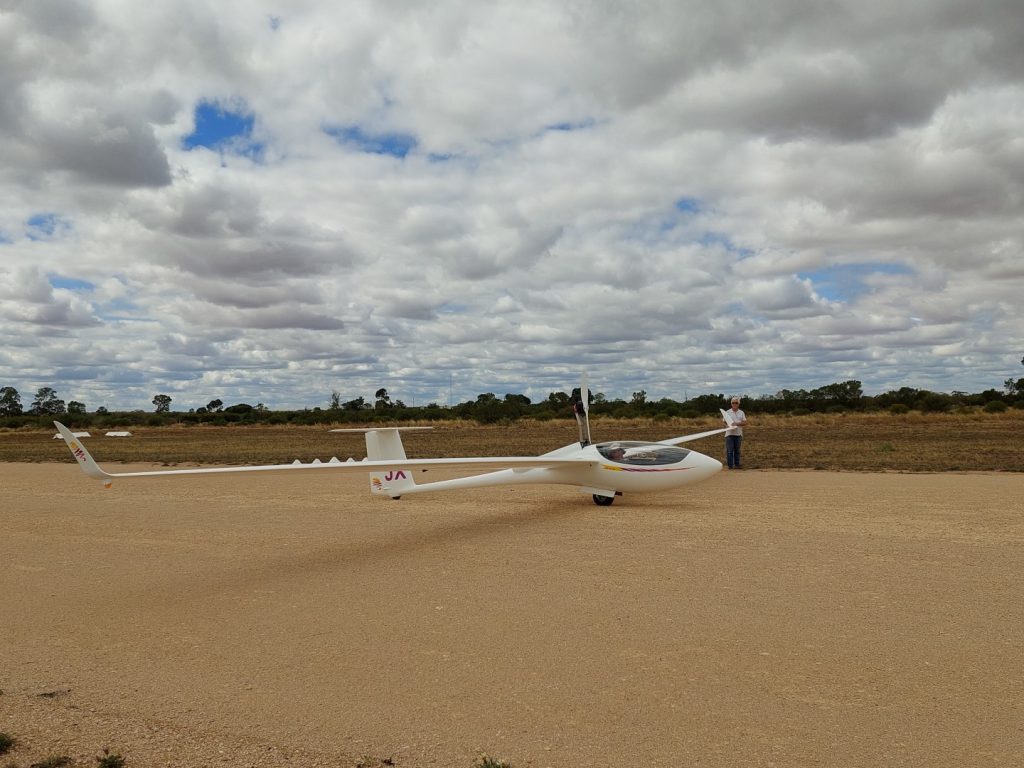Members of Waikerie Gliding Club were excited to see an all-electric, self-launching sailplane visit Waikerie over the past fortnight. The proud owner, Phill Hollick from the Sunraysia Gliding Club at Mildura brought the brand new sailplane to demonstrate and allow selected members to have trial flights.
The sailplane, an AS34Me, is manufactured by the Alexander Schleicher factory in Germany and is the latest production model in their series. It is made of a composite structure of carbon-fibre, fibreglass and Kevlar and has an 18m wingspan. It is a Standard Class glider, meaning it doesn’t have trailing edge flaps. Phill has had the cockpit equipped with the latest instrumentation which includes an LX9000 and a Hawk vario.
Several members took the opportunity to have a trial flight with myself taking to the air on Thursday 23rd March, Mark Morgan on Saturday 25th and David Jones on Wednesday 29th.
It was a dream come true for me. Ever since it became viable to use electric propulsion, I have waited to see and maybe fly this way. Many versions have been in development over recent years but now that the major manufacturers have joined the race, we can expect to see many gliders now equipped with this method of launch.
Thanks to Phils generosity I was able to take up his offer and fly this beautiful machine. After a thorough look over and briefing, we towed out to the runway, and I climbed aboard. I must say I was very nervous not only because of the launch method, but because it was such lovely glider, and I didn’t want to damage anything. The start up and power on system is extremely simple and quick. All that is needed is to extend the motor to the upright position then press the starter and push the throttle full forward. The glider then rapidly accelerates and lifts off after about 200 metres. The rate of climb is exceptional at about 3.5 metres/second.
At about 1,300 ft I encountered a thermal, so I backed off the power and began to climb. As I did, I was able to shut down and retracted the engine with one simple movement of the throttle to its home position. I was then able to soar as a normal glider and did a small cross-country flight of about 145km. I did several restarts in the air which were also very easy.
On return, the battery indicators showed that they still had 75% capacity which would give a range of about 120km should one be far from home with no thermals left at the end of a day.
The advantage of electric propulsion is ease of use, much quieter than internal combustion or jet engines (which have been around for many years) and less things to go wrong. Electric motors need no warm up or cool down time, so can be extended and retracted with minimum loss of height. The disadvantages are the weight of the batteries and, being lithium-ion, the danger if them combusting. Battery technology is increasing rapidly which will only enhance their development.
Thanks to Phill for his generosity, Martin Rule & Mark for a DI briefing and Bernard Eckey who assisted in making it possible.


